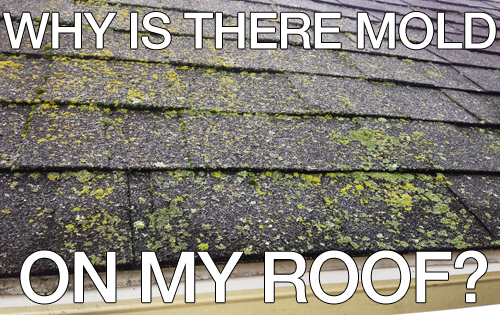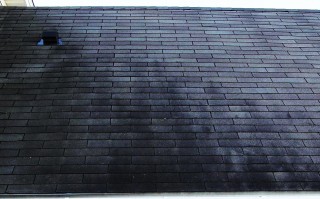Why is there mold on my roof?
May 12, 2014 | Filed under: Metal Roofing,News
Why Is There Mold On My Roof?
Truth is, the mold on your roof is actually not mold. It’s an algae-like bacteria. Its science name is gloeocapsa magma. Gloeocapsa magma is a cyanobacteria which feeds on limestone. Modern asphalt shingles contain limestone as a filler. The gloeocapsa magma feeds on the limestone and moisture in your asphalt shingles and causes black stains on your roof. In worst case scenarios, the roof algae will turn green and have a mossy appearance.
What can I do about the black streaks on my roof?
To get rid of algae on your roof, you’ll need to clean it. Wet down the roof with a pump sprayer using a mix of 1 part bleach and 2 parts water. Brush your shingles with a soft brush. Do not use a power sprayer as this may damage the shingles, removing granules. We recommend you protect your foundation plantings as the bleach will damage your plants. We also recommend doing this work from the ground. Do not climb on your roof, the surface will become slick and dangerous.
How do I avoid algae growth on my roof?
The only way to avoid the algae returning is by installing zinc or copper strips near the ridge of your home. Rainwater will collect ions from the metal strips which will keep the algae from growing. When it’s time to re-roof your home, invest in metal. A metal roof from Schroer & Sons is made from recycled aluminum. It is resistant to all forms of algae, mold, and mildew. Our roofs will not streak or stain. They will remain beautiful for the life of your home. Not only are metal roofs functionally better than asphalt, they are also more attractive and retain their look for many decades.
The ultimate solution to black streaks and algae on your roof is to buy metal. When it comes time for you to re-roof your home, contact Schroer & Sons and protect your home for life! Call us today: 937-492-7725!
For more information of roof mold and algae, visit asktoddmiller.com.

